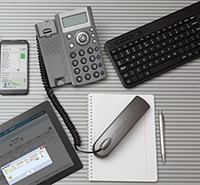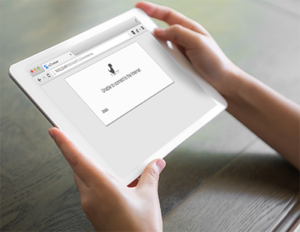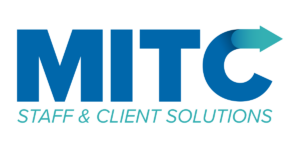Agencies Speak Out on EVV in Louisiana
The State of Louisiana has not had a lot of success with EVV. It previously attempted to mandate Sandata for EVV in 2013 and then First Data for EVV in 2015. It ended up cancelling both. On April 18, 2017, the state announced its third EVV mandate plan.
The state and providers have wasted an enormous amount of money, time, and energy with nothing to show for it. All mandates have involved the state selecting a single vendor. The third mandate offers a state system, but leaves the providers to pay for all the technology with no freedom of choice! The Louisiana approach to EVV was very different than the approach other states took. In Missouri, for example, providers could choose any vendor, as long as it complied with general regulations for Medicaid electronic documentation. Over 600 providers in Missouri have successfully been using EVV for billing and payroll since 2015.
On April 18th, the Louisiana Department of Health released a memo outlining the EVV requirements that will take effect on January 1, 2018. The plan requires providers to use GPS verification via tablets which are kept in the client’s homes. Providers will incur the cost of the tablets and data plans. This memo contains misleading information regarding the use of GPS as it pertains to the Cures Act and the perceived monetary neutrality to providers. According to providers, the memo wildly underestimates true costs and exaggerates savings. As evidenced from the testimony of Louisiana providers in this article, the state has not adequately addressed many concerns with the selected technology and the cost burdens they will place on providers.
In this article Dr. Laura Brackin with Brackin & Associates, along with representatives from Care, Inc., The Arc of Baton Rouge, and Options, Inc. share their thoughts on EVV in Louisiana. Many providers in Louisiana have been using EVV systems for years; they hope their feedback will be helpful to their state and others considering EVV implementation.
The State’s Case for EVV
The Community Provider Association (CPA) represents many providers in Louisiana. In 2015 the CPA wrote a letter to the state outlining questions and concerns regarding the state’s plans for EVV implementation. The letter said:
“The Community Provider Association supports the implementation of an EVV system, as it has the potential to streamline billing and other administrative processes, and reduce waste, fraud, and abuse. However, if the system is not an appropriate system for Louisiana and/or is implemented inappropriately, it will not achieve the desired outcomes and could harm a system that is already on the brink of collapse.”
Brackin is the former head of the Louisiana Office for Citizens with Developmental Disabilities and current President of Brackin and Associates, a disability consulting firm. She represents the Community Provider Association, which has been actively involved with Louisiana’s EVV considerations for the past few years.
“Our team wanted EVV, and felt it would be helpful to providers because a lot of the processes with the state were time consuming and labor intensive. We also knew some providers across the country were billing for things they wouldn’t have been billing for with EVV, either intentionally or unintentionally. That money could be better redirected toward services for individuals and increases in reimbursement rates.”
“Data from 2012 indicated EVV saved states money due to a reduction in ineffective or inappropriate billing. The cost savings could range between 10 and 20 percent. The cost of Louisiana’s largest DD waiver is well over $400 million per annum, which would mean there could be cost-savings of $40-$80 million per annum. Even a more conservative estimate of 5% in cost savings would still yield significant results of $20 million. That’s a lot of money and we need to make sure we’re spending it appropriately in our service system.”
The Vendor Debate
“Several providers in the state were already using an EVV system; however the state wanted to implement a single system for all providers. We did not think this was a good idea. We pushed for the state to allow providers to choose their own EVV vendor from a state approved vendor list. But the state had already made the decision to hire the first vendor.”
 “There are several benefits for the state to use an approved EVV vendor list, as opposed to implementing a single EVV system.”
“There are several benefits for the state to use an approved EVV vendor list, as opposed to implementing a single EVV system.”
“First, when the state contracts with one entity, it’s very labor intensive for the state. It takes a lot of time and resources for state staff to understand the complexities of an EVV system in order to develop the Request for Proposals (RFP). It then takes time to evaluate those proposals, initiate a contract, and manage that contract. It’s much easier and faster for a state to implement EVV statewide by setting criteria and then approving the vendors who meet that criterion. With the deadline for the Cures Act in 2019, allowing for multiple vendors is the fastest way for states to get an EVV system in place.”
“Another benefit to the state is that allowing multiple EVV vendors means that the state isn’t tied to one vendor. Therefore, if the state has a problem with one particular EVV vendor they can eliminate that vendor from the list without threatening the entire EVV system for the state. Whereas if the state uses one vendor and then has problems with that vendor, they are stuck until they can develop a new RFP, go through the selection process, and implement a new system.”
Cost Savings of a Multiple-Vendor Solution
“Using multiple vendors is also a benefit to the state financially. It takes the state much longer to implement a single system than it does to use multiple vendors. And time is money. EVV saves states money by reducing fraud, waste, and abuse in the system. The longer it takes the state to implement EVV, the longer it takes to reap the cost-saving benefits of EVV. Think of the money the state could have saved over the past four years if Louisiana would have implemented EVV in 2013. We are now four years down the road, facing a state budget crisis year after year, when we could have been saving millions of dollars. It doesn’t make sense.”
“Louisiana is again proposing the use of one state-wide system. However, the state has agreed to build a bridge between the EVV systems providers are currently using and the state’s system. But it is my understanding that providers who are not currently using an EVV system will be required to use the state’s EVV system. The state will only allow exceptions for those providers who are already using an EVV system. That may have changed.”
“Providers initiated EVV legislation several years ago to push the state to move forward with EVV. The bill passed and became law, but implementation has not been what we expected. We’re now considering whether we need legislation to ensure that providers be allowed to choose the EVV solution that works best for them, because that’s best practice.”
What Louisiana Agencies Love about EVV
Some providers in Louisiana have been using EVV systems for years, and they know what works best for them. For example, Options, Inc. in Hammond has used multiple EVV systems in the past. CFO Sue Bush prefers a system that allows caller-ID. The agency once used a system that was not caller-ID based; employees had to enter a 6-digit pin for each client. This caused many mistakes. In 2009, the agency switched to MITC, and the new system eradicated those mistakes.
 However, that is not the biggest benefit of the new EVV system. Bush says: “The biggest advantage of using MITC for our EVV system is during audits. Anytime we use MITC and another entity uses paper timesheets and there is an overlap within the state, we don’t have a problem because our records are electronic. That means we get paid.”
However, that is not the biggest benefit of the new EVV system. Bush says: “The biggest advantage of using MITC for our EVV system is during audits. Anytime we use MITC and another entity uses paper timesheets and there is an overlap within the state, we don’t have a problem because our records are electronic. That means we get paid.”
Options, Inc. can also automate pay differential calculations and integrate them directly from MITC into payroll. “MITC classifies shifts as different pay types before records are exported to payroll,” says Bush.
Another agency that has seen the benefits of EVV is Care, Inc., which has offices in Hammond, Covington, LaPlace, and Baton Rouge. The agency used paper timesheets before switching to MITC in 2014. Billing Coordinator Bridgette Wilson says EVV is worlds better than paper timekeeping. For example, when clients are admitted to the hospital, Wilson can make sure there is no duplication between administration, admission, and discharge. “We can see that nearly in real-time… Knowing where people are in real time helps you manage your employees.”
The Arc of Baton Rouge also prefers EVV over paper timekeeping. Business Manager Karen Monroe says: “Our data is accurate now that we are using MITC. It resolves problems we encountered spending hours and hours on paper timesheets.”
The Costs of EVV
Wilson worries about how the EVV mandate will affect agencies. She says, “The state plan is going to be a problem for everybody that has a payroll process. EVV changes your payroll process; it’s not just time & attendance. How will payroll and time & attendance work together in the state’s solution? I don’t see how the state is going to do that.”
Louisiana estimates the cost of EVV will be non-existent to the state in the long term. A 2014 studying claims that “the savings of implementing a statewide EVV system will more than offset the associated costs of implementation and administration” [1]. Additionally, the April 18th memo states that the “EVV system already in place for center-based, vocational, and transportation providers and utilizing smart devices with internet access is at least cost neutral, and in many cases will represent a cost savings to providers.”
Wilson disagrees: “I don’t know where they get the idea that agencies won’t incur any costs. The tablets are a cost, and my experience is that there isn’t any administrative savings with EVV. I don’t know where the state got those ratios regarding time spent on data, but they aren’t accurate for Care, Inc.”
Bush says the state’s proposed solution is based on faulty logic. “The LDH is saying that we can get rid of people who process billing because the automated system will eliminate data entry. What the state doesn’t recognize is we still have to do all the quality control by matching daily logs with billed shifts. The state’s system doesn’t eliminate anything as far as we’re concerned.”
Wilson agrees: “Fundamentally, implementing EVV did not result in a staff reduction; it changes the work. In my experience, implementing EVV does not generate a cost savings from eliminating positions.”
Agencies Take Issue with the Smart Device Requirement
Following the release of the Louisiana Department of Health Memo (LDH) on April 18th, questions remain regarding the required use of technology and the cost burden placed on providers. Mostly, providers are unhappy that the state wants to require smart devices for EVV.
Wilson is concerned about this requirement. “Who replaces a tablet when a client’s grandchild comes and breaks it? Who is accountable for that piece of equipment? Many people in rural areas don’t have Wi-Fi or computers. How do I, as a provider, get Wi-Fi in a home where there isn’t any? [The memo] says data plans, and that the provider will pay for them. I don’t see how that is going to work.”
 Wilson knows exactly how much it would cost her agency to purchase the tablets: $68,000 for the initial purchase alone. “The state also estimates the tables will last for three years, which doesn’t seem realistic. The $68,000 does not include data plans, replacement hardware, or tracking the hardware.”
Wilson knows exactly how much it would cost her agency to purchase the tablets: $68,000 for the initial purchase alone. “The state also estimates the tables will last for three years, which doesn’t seem realistic. The $68,000 does not include data plans, replacement hardware, or tracking the hardware.”
Bush agrees, especially if the state restricts EVV to smart devices only. “The cost would be ridiculous. There is no way we could absorb the costs for providing tablets to 150 clients in addition to the data plans.”
Brackin points out that the administrative burden is also worth considering, especially when turnover rates are high. “It will be extremely time consuming for providers to issue smart phones to DSPs, train DSPs on how to use the smart phone for EVV purposes, and then ensure that the smart phones are returned when the DSP is no longer employed. A lot of providers have expressed to me that there are DSPs who just quit without returning anything,” she adds. “Who pays for that?”
Single-Vendor Problems
Bush is also concerned about the plan to integrate the state’s EVV system with payroll. “Our payroll is very complicated with shift differentials. How are our records going to be imported into a payroll system? How are we able to ensure people are paid correctly?” She thinks Missouri’s EVV model, which allows providers to select their own vendors, would be a better option.
Monroe from The Arc of Baton Rouge hopes the state does not go to a single provider. “There is no way our in-home services could go to the state provider because it cannot provide us with the information we need on the backend. I’m talking about things like the payroll reports and other items MITC provides, like tracking training and leaving messages. It just doesn’t have that ability. It would cost us more money if we used the state program, because we would have to hire someone else to convert data for payroll purposes and tracking training.”
Bush also has concerns about the GPS accuracy of the state’s technology. When an employee clocks in from a landline phone, caller-ID guarantees the employee’s location. If an employee clocks in from a mobile device, someone needs to check the GPS coordinates. That gets tricky when employees pick up clients from various locations. “It could be anywhere. It’s all over the place. I think it would be way more difficult,” says Bush.
She says the messaging capability of the state’s technology is another issue. With MITC, employees must listen to automated alerts before clocking in or out over the phone, or they receive them on the web portal. If her agency must use another system that does not support these alerts, the agency’s communication will suffer.
Lessons Learned
Monroe hopes that as the state considers how to proceed it listens to Louisiana providers. “I think EVV is great because there is so much fraud going on. There just needs to be a single way to streamline EVV and get the state on board to allow providers to know the parameters. Providers need to be able to choose our own vendor and get the information as we need it. Going to sole provider, I can’t see how that would work.”
Brackin has advice for other states based on her experience: “Decide what the state needs from an EVV system, develop a list of approved EVV vendors, and then allow the providers to choose their own system. Providers are all different. Some offer only one service to a small number of individuals; others may operate in multiple states offering multiple services to a large number of individuals. As long as the EVV vendors all meet the state requirements, a state should be able to give providers the flexibility to choose the EVV system that works best for them.
Brackin advises other states to start advocating now for the right to choose different vendors.

